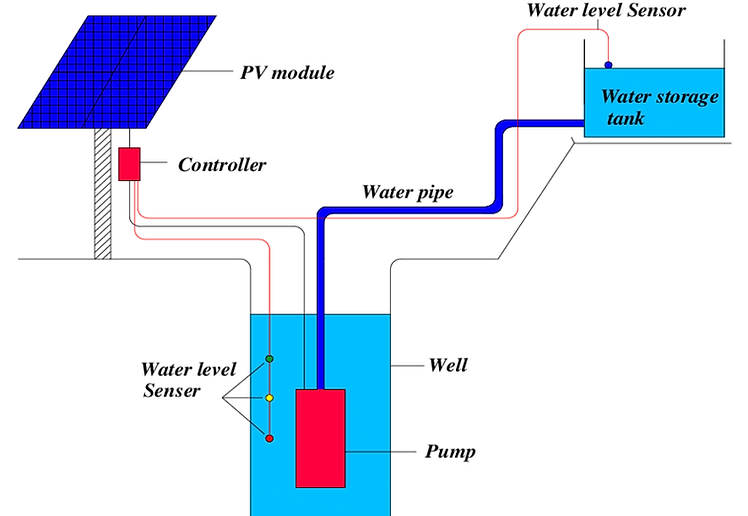


Remote water pumping is one of the most practical and cost-effective uses of solar energy today. Solar electric power systems designed for water pumping have no moving parts or batteries. When the sun shines, the system pumps water. Typically water requirements peak in the summer months when free available energy from the sun is most abundant.

Below is a sample of a solar pump kit that was sold to a customer at the start of summer. Please e-mail or call so I can gather information to properly size the right pump and solar equipment for you.
INFORMATION NEEDED:
Location - Nearest large city is typically all that is required to get accurate solar resource data.
Water needed per day - Solar water pumps operate only during daylight hours. If water is needed at night it can be stored in an elevated cistern or pumped via battery power from a separate PV system.
Season - Determine which months water is needed at the site. In year round applications, does the water demand peak during the summer months?
Total Dynamic Head (TDH) - TDH is the total load on the pump and it is the sum of several factors measured in feet:
Static Water Level - This is the depth from the well surface down to the water level when the pump is at rest.
Drawdown - This is the level that the water drops to when the well is being pumped. If the natural recharge rate is less than the pumping rate the water level will drop, requiring pumping to be adjusted accordingly.
Well Depth - It is very important to know depth below drawdown level. Installing the pump too close to the bottom can cause the pump to become clogged with debris. Certain pumps have limitations on how far below the water level that they can be installed.
Elevation Above Wellhead - Measured in feet or meters. This is the elevation change of the tank location.
Distance from Wellhead to Tank - This is the distance of pipe from the wellhead to the tank. Pipe diameter is critical to keep friction loss at a minimum. Also important to note if a new or existing pipe is being used.
Pressure - What is the water pressure requirement for the system? This adds 2.31 feet of head per 1 PSI. A requirement for 30 PSI will add 69.3 feet to the head.


